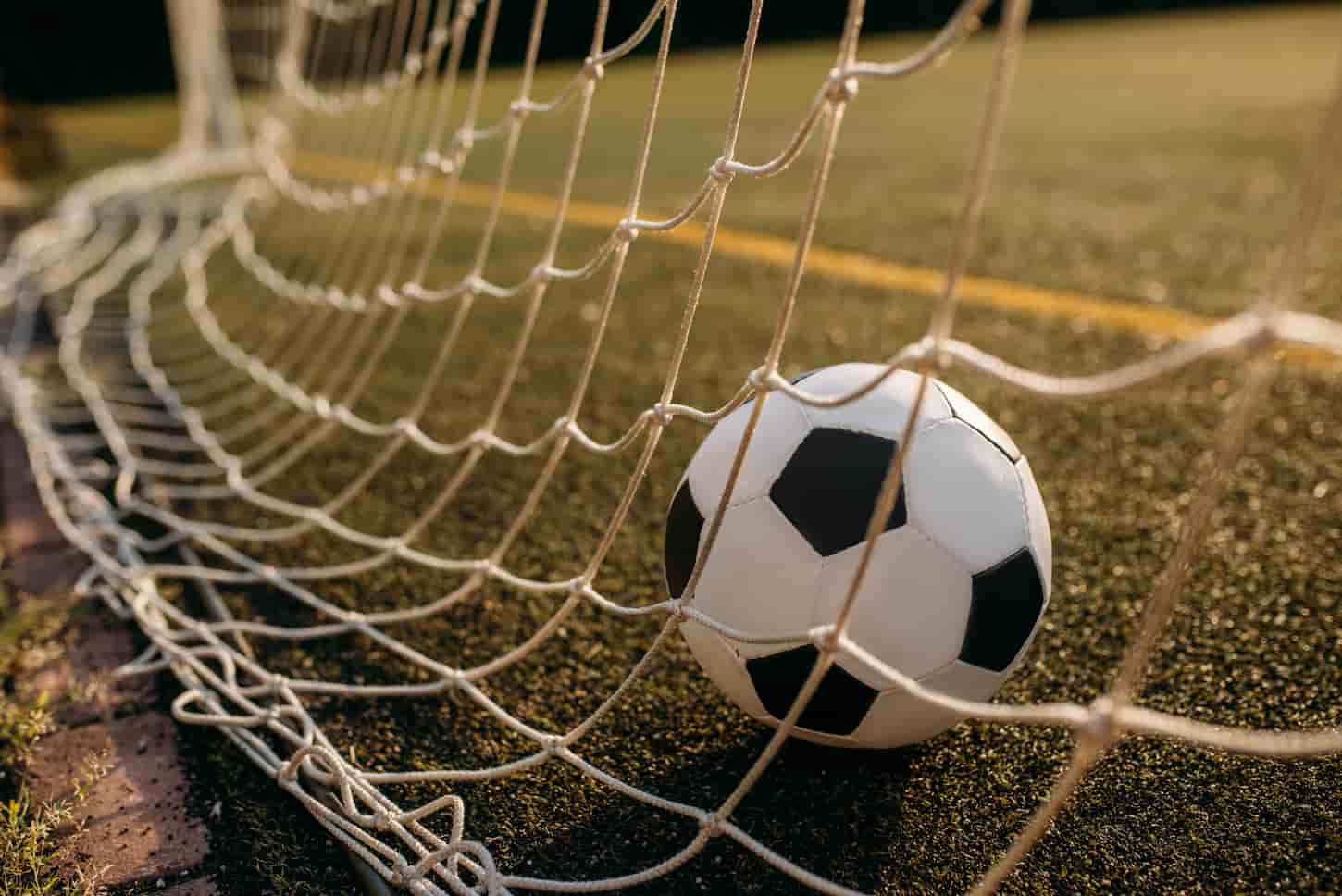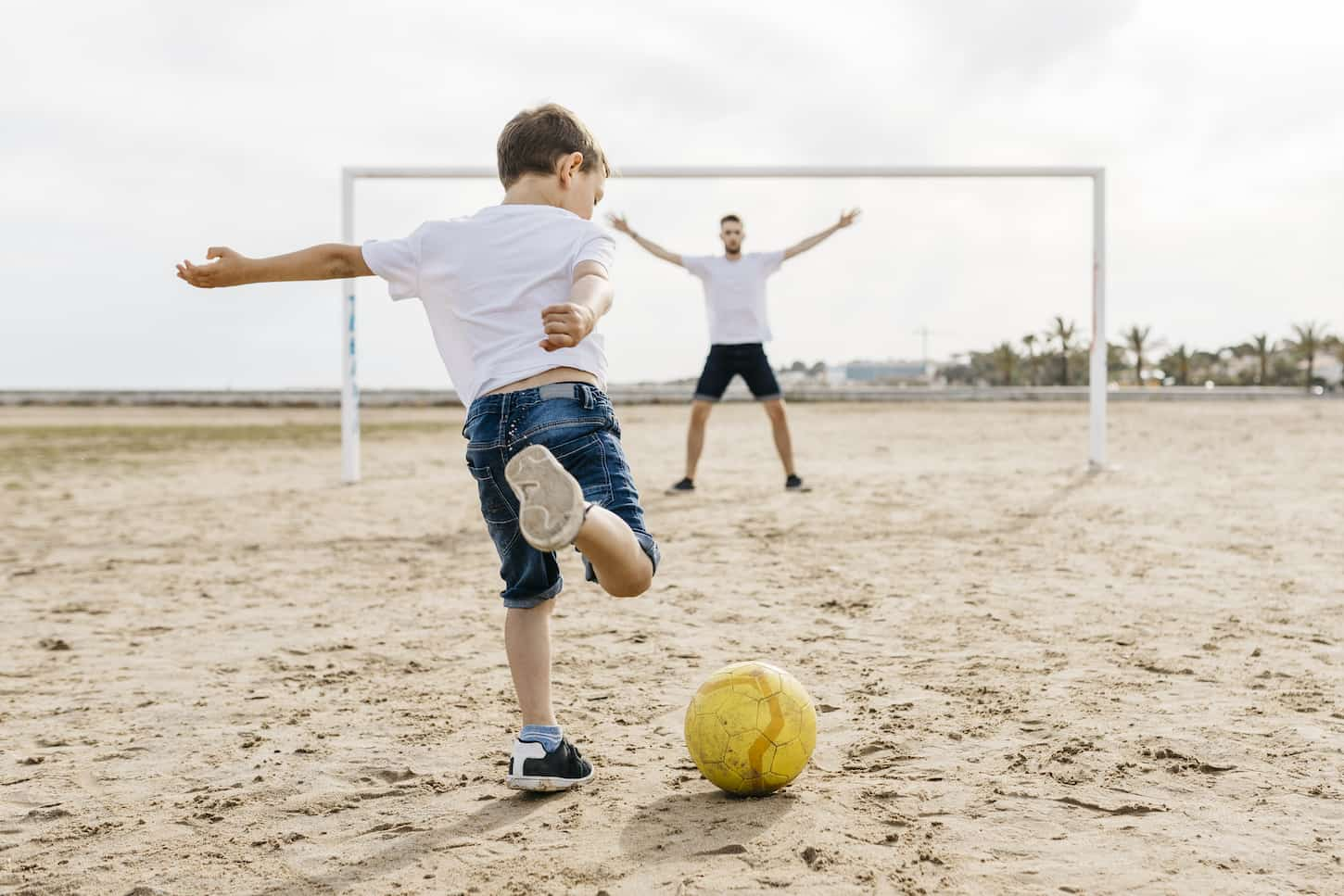Kickball is one of the few sports which is played by all age groups in the US. Invented in the US in the nineteenth century, kickball inherited elements from baseball, soccer, and softball, which is why it is also known as “soccer baseball” or “kick baseball” in other countries. That being said, a common question for kickball is about what size ball you need in order to play.
Kickball can use any rubber or bouncy ball between 8-16 inches in diameter, with a 10-inch ball being the standardized “best” size for a dedicated kickball. Kickball also needs 4 diamond-shaped bases for official games, according to the World Adult Kickball Association (WAKA).
Similar to baseball, kickball has 2 teams, each having 8 to 11 players. The objective is to score more runs than the opposite team, with 1 point being awarded when a player kicks the ball and runs all the bases. Ready to talk more about kickball? Let’s do this.

What Size is a Standard Kickball?
According to WAKA, the standard size of a kickball is 10 inches in diameter. However, if you want to play with your friends at home, then any ball between 8 to 16 inches would work just fine.
The size of the ball is important because it determines the quality of the gameplay and how much fun you will have.
- You do not want your ball to be too big because it will make it harder to hit the ball to a longer distance.
- On the other hand, if the ball is too small then a player might hit it very hard and it is possible that someone might get injured.
Along with the size, consider playing with a bouncy ball because a bouncy ball travels further on contact than a non-bouncy ball. This allows for players to make better contact and score more runs, keeping an interest factor in the game.
Using a bouncier ball also lowers the chance of injury if and when people get hit by the ball.
Is There an Official Ball or Ball Size for Kickball?
The Mikasa Official Adult WAKA Kickball is the only official kickball issued by the kickball association for adult games. It is a 10-inch ball for use in either indoor or outdoor kickball games. It should be inflated to a pressure of 1.5 psi.
Since this ball is issued by the association, it is designed to guarantee high-quality performance and gameplay.
The ball comes in the recommended size of ten inches in diameter and features a red-colored, diamond-shaped design. The ball is made from quality material to ensure its strength, durability, and long life cycle. This is why it can be used to play both indoors and outdoors.
When inflated to the recommended pressure of 1.5 psi, the ball will bounce really well on surfaces like concrete, grass, and even on dirt.
When inflating the ball, take care to not overinflate it. This could cause it to lose shape over time, taking away from its effectiveness.
The other important point is that the Mikasa ball is only recommended for adult/professional games. Other ball options would be more effective for games for individuals 18 years and younger.
Pro tip: There is no official kickball for kids’ kickball games. Go ahead and use an appropriate, bouncy ball that you have on hand that’s between 8-16 inches in diameter.
Do You Have to Get and Use the Official Kickball?
Kickball players do not have to use the official kickball to play kickball unless playing in an official league. If the ball available is around 10 inches in diameter and is bouncy enough, then players should be good to go.
As mentioned above, the WAKA official ball is not recommended for kids. However, if you are an adult and looking to play kickball professionally, it is advised to play using the official ball.
This is due to the fact that if you practice with the equipment used in gameplay, you can perfect your technique. If you practice with the same ball you play with it may provide you a competitive edge over your opponents.

Can You Use a Soccer Ball for Kickball?
A soccer ball can be used for kickball as long as the general rules are adjusted to forbid players from throwing the soccer ball at the heads and necks of players. This is especially important if the players are children.
Similar to a kickball, a soccer ball is available in many sizes, and a ball can be chosen depending on the age and skill level of the players. Although the standard size of a soccer ball is bigger than the standard size of a kickball, the design and bounce factor of a soccer ball compensate for what is lost in size.
If you are using a soccer ball to play kickball then refer to Table 1, which shows what size of a soccer ball would be best for a particular age group.
| Soccer Ball Size | Age Group |
|---|---|
| 27 to 28 inches | 12 years old and older |
| 25 to 26 inches | 8 to 12 years old |
| 23 to 24 inches | 8 years and younger |
| 18 to 20 inches | Skill Training |
What Size of Kickball Should Kids Use by Age?
Younger children should use smaller-sized balls so that children are able to pick up and handle the ball more easily during a kickball game. Younger children will also find kicking smaller kickballs easier than kicking large kickballs.
Table 2 shows the different sizes of kickballs and the recommended age groups to use that size.
| Kickball Size | Age Group |
|---|---|
| 8 inches | 5 years and below |
| 8.5inches | 10 years and below |
| 9 inches | 15 years and below |
| 10 inches and above (WAKA approved) | Adults |
As demonstrated by the tables, the size of the ball and the age of the child is directly correlated. This is because larger balls are bulkier and heavier and require more force to kick the ball a sufficient distance.
Furthermore, if smaller balls are given to adults, it is more likely that they will kick the ball very hard and a player could get injured if hit. So make sure that adult groups use a larger-sized kickball.
Along with choosing the right size, it is also important to consider the surface area that the ball will be played with on. Depending on the material used to make the ball, some balls are only good for indoor games or outdoor games.
Some balls are not versatile in this way, and it would be more cost-effective to consider this when purchasing a new kickball for gameplay. If you want a versatile ball for use both indoors and outdoors, make sure you get an official kickball designed for such use.
Best Kickballs for Use in a Home Game
The following 3 balls are among the best kickballs available in the market right now and they all are under or about $20, depending on sale prices.
- WAKA Official Kickball (click here to see the best pricing on Amazon now)
- Fitness Factor Playground Kickball (shop now on Amazon)
- GoSports Official Kickball (get a 2-pack of kickballs on Amazon)
If you don’t have a ball to use for kickball and you’re going to buy one, I’d get the WAKA official ball. That way, you’ll have the official ball and it’ll be usable indoors and outdoors.
Without discussing the WAKA Official Kickball any further, though, there are other viable options to consider when looking for a kickball.
- Fitness Factor’s Playground Kickball has a size of 10 inches and is preferred by both beginners and professionals. The ball is made from top-notch material which resists tear and punctures, and makes it an all-surface ball. Its sturdy design makes the ball more durable and allows it to maintain the pressure for a longer period of time. This ball is known for a good bounce and will only cost you around $20, which is a good value for your money. The ball comes with an air pump which is used to easily inflate or deflate the ball.
- The GoSports Official Kickball also features a red colored diamond design and is designed with versatility to be used both indoors and outdoors. The ball comes in the standard size of 10 inches in diameter and has a puncture resistant design. The ball performs optimally when it is inflated to 1.5 psi. This ball will also cost you around $20. One negative aspect of this ball is that the pressure retention is not as effective as other balls, so you may find yourself reinflating more often.
Now that you have the ball, you might be asking yourself, “How do you play kickball?” Look no further, let’s discuss the basic rules of a standard kickball game.

Basic Rules of Kickball?
- Kickball has 8 to 11 players on each team.
- Kickball, unlike baseball, does not have strike outs or stealing.
- The player is awarded a run when they safely returns to the home plate before an inning ends.
- The player would be deemed out if he kicks the ball and the ball is caught by the opposite team player. He will also be out if he is either tagged out or if he is forced out at the base by a player on the other team.
- Each kickball game usually has six innings, but the number of innings can be more or less than that if both the teams agree to it before the game starts.
- Sportsmanship and fairplay are a key part of the game. Players are expected to leave the field if they think that they were gotten out. Any kind of cheating may result in the player being sent off of the field immediately as a penalty.
- At the end of the game, the team with the most runs wins the match.
Now, this is just the basic set of rules to get you started playing a game of kickball at home. If you’re ready for the official rules – complete with FAQs and what-if scenarios, make sure you read our complete Kickball Guide: How to Play, Rules, and FAQs next. It’s a great read – and sure to get you ready for any game of kickball!
Resources
Learning from your own experiences is important, but learning from others is also smart. These are the sources used in this article and our research to be more informed as a family of sports nuts wannabes.
- World Kickball Association. “Rules of Kickball.” World Kickball Association, 1 July 2020, kickball.com/rules.
